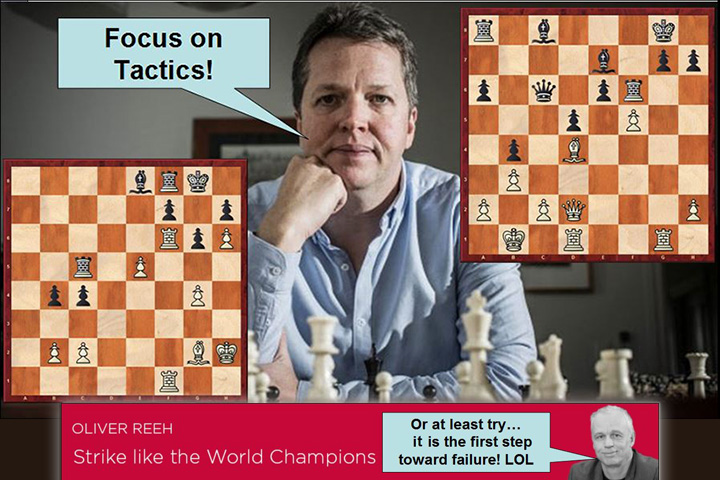Review: Strike like the world champions!
GM Nigel Short, a while back, was training Iranian chess players, and when his contract finished, he was at the airport, and one of the students, who had time to prepare before the next tournament, asked him how to improve. He remembered the games of this student and advised to focus on tactics.
The student followed the advice (believe it or not), and in fact, the next tournament had a performance of over 2300, winning the first place. Listening to such story I was incredulous because the truth is: today we all make thousand of tactic positions a year, so how focus on tactics could improve my or anyone else performance? Still GM Short showed one of his games, and I did miss the tactical move which would have won the game (at the time the game was played Short missed it too!).
This experience made me understand that the thousand tactics I employ each year are not enough, and I need to focus on improving also that part of my game.
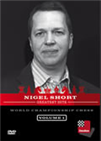 Nigel Short takes us on an electrifying journey through a very rich chess career, which saw him beat no less than twelve world champions. His experience in tournaments and matches all over the world – Short has visited a total of 89 countries – can be seen in the narratives that precede the games which he annotates with humour and instructive insights.
Nigel Short takes us on an electrifying journey through a very rich chess career, which saw him beat no less than twelve world champions. His experience in tournaments and matches all over the world – Short has visited a total of 89 countries – can be seen in the narratives that precede the games which he annotates with humour and instructive insights.
This is the position from the game Short vs Penrose 1977, when Short answered 13.Qf3, which is not the best move in this position.
Here one must understand how to attack the kingside, but it's not a flashy tactic like we often find in all tactic trainers program in the world. Instead, this is a move we need to find in a real game. Maybe you are better than me and found the right/move idea, I didn't, Short didn't.
Clearly the question is: how can we improve? I decided to start with something very similar to Short's game, and which would give me some feedback. Internatioanl Master Oliver Reeh is Mr. Tactics for ChessBase, he covers the tactics in ChessBase Magazine, as well as in the Master Class series.
This DVD is made by a selection of the tactics IM Reeh likes more, from the one used in the different Master Class DVDs. For a total of 88 video clips with relative feedback. Plus a bonus made by 20 combinations of the great Paul Morphy.
We must also remember that chess must be fun, and this is another goal of the DVD, to show some combinations which will brighten your day.
Who are the world champions used in these amazing combinations?
The list is quite remarkable: Fischer, Kasparov, Carlsen, Tal, Karpov, Capablanca, Lasker (and as mentioned before a bonus section is dedicated to Morphy).
In the game Bird vs Morphy, White just played the 17th move: 0-0-0. What should Black play?
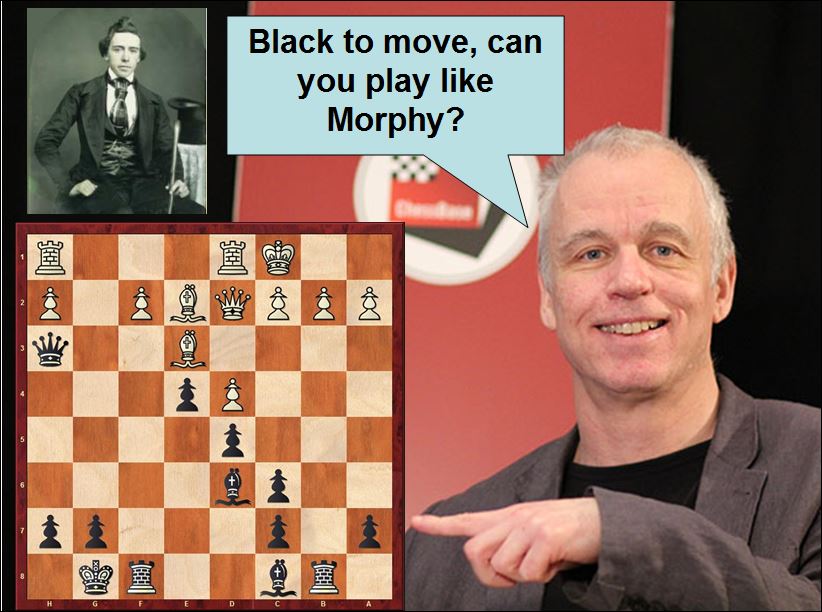
In lieu of the solution, I tend to give the entire game, because while I believe everyone should understand these positions, we don't raise our chess understanding as much if we don't see the entire game, analyze it as actively as possible, understand why the pieces were in certain places, and what their roles were.
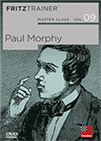 Learn about one of the greatest geniuses in the history of chess! Paul Morphy's career (1837-1884) lasted only a few years and yet he managed to defeat the best chess players of his time.
Learn about one of the greatest geniuses in the history of chess! Paul Morphy's career (1837-1884) lasted only a few years and yet he managed to defeat the best chess players of his time.This DVD opened my eyes to the greatness of some world champions, making it clear why they are the names we all mention continuously. It also strengthened my chess, because the truth is: while I failed most of the exercises, through failure came a new understanding as to what I should have thought, and didn't, which I hope will help me in my tournament games. I'd like to share one of the exercises that I failed because it is worth your time too! And in my opinion, one should buy the DVD just for this position.
A few rules before we start. Place the pieces on the board, like in a real tournament game. Don't move the pieces, also like in a tournament game, and after ten minutes write down your analysis, so you can compare it with mine.
By the way, Reeh does a better job than mine, of course, because he shows the position earlier than where I show it, and he described the features of the position, such as from which opening it came. Clearly a master level commentary as we would expect in any lesson given by an IM or GM.
However, in this review, I'm more interested in the train of thought, because this is all we have at the board, and this is what we are trying to improve thanks to the DVD.
Black just played 23...Bc6
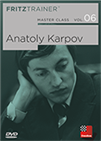 On this DVD a team of experts looks closely at the secrets of Karpov's games. In more than 7 hours of video, the authors examine four essential aspects of Karpov's superb play.
On this DVD a team of experts looks closely at the secrets of Karpov's games. In more than 7 hours of video, the authors examine four essential aspects of Karpov's superb play.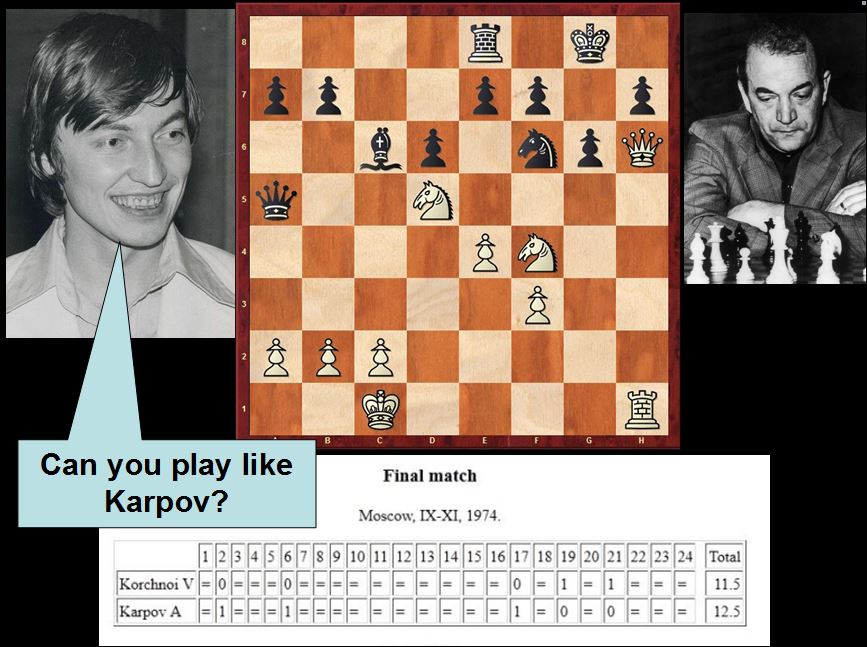
When I saw this position, I began to think something like: there must be a checkmate, so my first candidate line was the one which began with a check: 24.Nxf6 exf6 25.Qxh7 Kf8 26.Nxg6 fxg6 27.Qh8 Ke7 28.Rh7 Kd8 29.Qxf6 Kc8 and here I couldn't see how to checkmate. I thought to place the queen on the seventh rank and try to give checkmate, but all the squares are protected or controlled by Black.
Then I passed to some absurd moves like 24.Nxe7 or 24.Nxg6, but nothing. I couldn't find a way to checkmate.
In a recurring pattern, surely disapproved by Kotov, which make us waste time on the clock, I returned back to the first move analysed and found another idea: 24.Nxf6 exf6 25.Nh5 I thought this move would allow me to win, because I don't see how Black can stop the checkmate after 25...gxh5 26.Rg1, and then everything got spoiled by 26...Qg5; but I would still win, also if there is no checkmate.. 27.Rxg5 fxg5 28.Qxg5 and White has a decisive advantage.
Now at this point I was 15-20 minutes into my analysis, and I began to move the pieces on the board. Suddenly there came an ugly surprise — a move I didn't see when I was calculating in my head.
After 24.Nxf6 exf6 25.Nh5 Black can answer 25...Qg5 with check, and I must exchange the queens. 26.Qxg5 fxg5 27.Nf6 Kg7 28.Nxe8 Bxe8 and now I thought maybe there was some problem with the position. So I checked the video feedback and gained insight into how Karpov solved the problem of how to stop the queen on a5 from going to g5...
This is the real problem Karpov faced, which took me some time to understand.
Here for your enjoyment the entire game, so you can see if you got it right...
Victor Kortchnoi, two-times contender for the world championship, is a piece of living chess history. He is known as one of the greatest fighters in the history of chess. On this DVD he speaks about his life and shows his game.
Final thoughts
As in the Karpov position above one can undertake a training session which varies from 10 to 30 minutes. Now imagine having more than 80 selected positions coming from real games played at top level!
Thanks to this training process one can improve one's understanding of coordination between pieces, and gain skill in finding solutions to real problems over the board. IM Reeh makes the introduction and the positions pleasant thanks to his highlighting of the important elements in each one. I must add that his feedback is quite important in guiding one toward the solution.
Don't miss the chance to train your chess brain, and advance to the next level! I believe this product is also quite good for coaches who want to have a ready set of positions, to give as homework to their students.
Links
